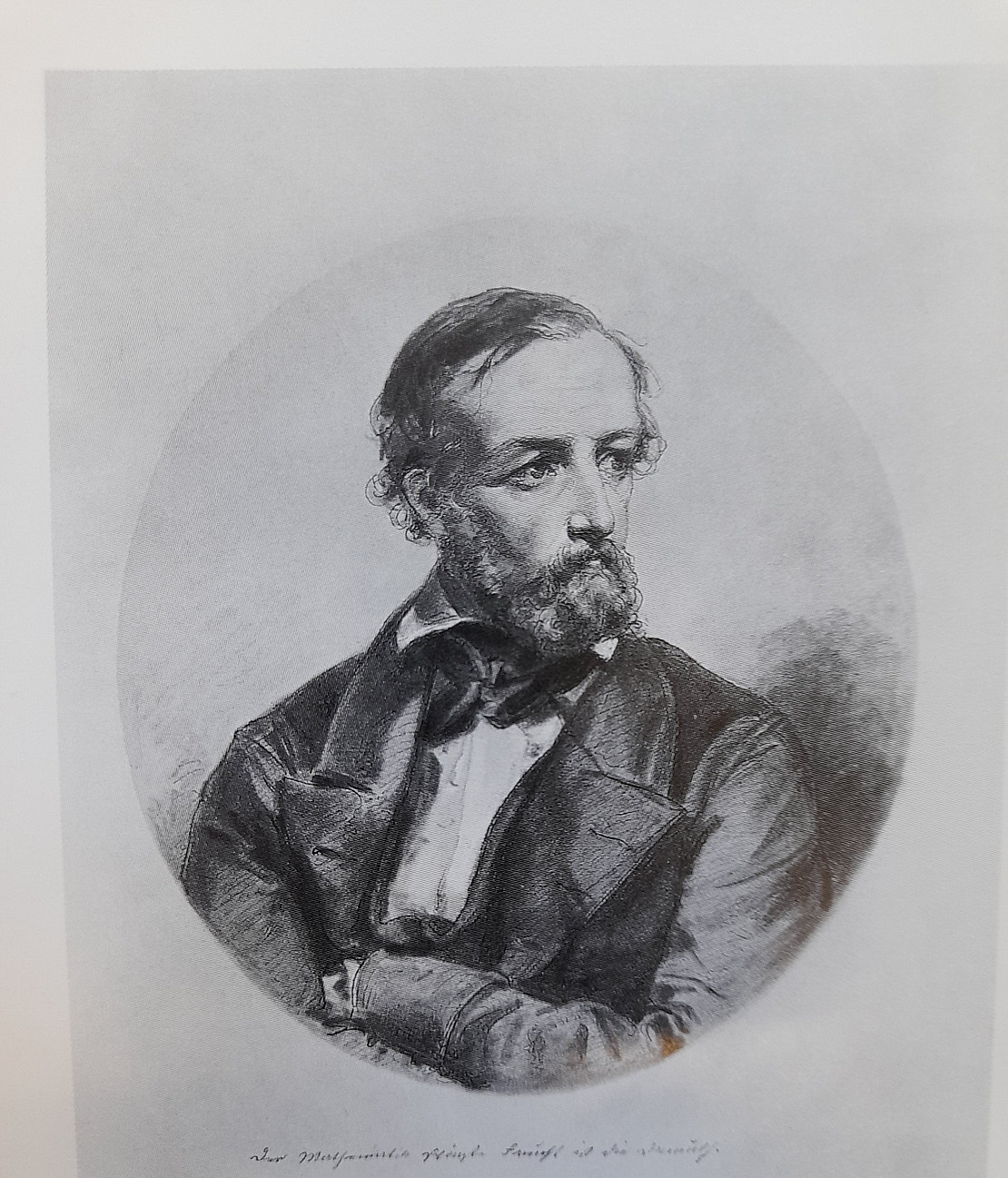This page contains automatically translated content.
Mathematics, music, fashion and more
 Image: UB
Image: UBIn the autumn of 1834, Felix Mendelssohn Bartholdy wrote to his sister Rebecka, wife of the mathematician Gustav Dirichlet since 1832: "Of course I know how to acknowledge what a unique thing a Dirichlet letter is, and I should probably have thanked you for it long ago ...". Dirichlet (1805-1859) left his name in the mathematical vocabulary as an outstanding scientist; in his private life, however, he held back from writing." In view of the many comments made by his family about his laziness in writing, the large number of his letters in the Kassel University Library is remarkable: together with the correspondence of his wife, their children and other family members (e.g. Fanny Hensel), there are over 1000 letters. These were transferred to Kassel University Library in 2019 by the "Philosophisch-Politische Akademie e.V." (Bonn) with the obligation to make the estate accessible to the public. The most important complex, the approximately 600 letters of Dirichlet and his wife Rebecka (1811-1858), will be fully transcribed by the end of 2022 as part of a third-party funded project. After completion, the transcriptions will be linked to the digital copies of the letters and both will be successively made available via ORKA.
Vivid insight into everyday culture
The family had reason to complain not only about the rarity of the mail, but also about the mathematician's handwriting. However, if you do go to the trouble of deciphering it, you will be rewarded with a lively insight into the career of the scholar and his network, into family and social relationships, into everyday situations from Cologne via Paris and Breslau, then Berlin and Göttingen, where he held the chair of mathematics from 1855 as the successor to C. F. Gauss. A brief insight: In 1825, the young student was hired as a tutor by the famous General Foy in Paris, which was considered the "world capital of mathematics" at the time (Elsrodt 2007). This was followed by the recognition of his first mathematical works by the Académie des Sciences and the important contact with Alexander von Humboldt, who was living in Paris at the time and supported the young compatriot in the future. Humboldt later introduced him to the house of the Mendelssohn Barthol- dy family in Berlin, in whose garden he undertook geomagnetic observations with the help of Dirichlet. In addition to subject-specific information, the special appeal of family correspondence lies in the wealth of topics that are missing in scholarly correspondence. These include in particular the everyday culture of the time: housing, meals, clothing, transportation, prices, matters of the heart or health problems. The "fall height" of the topics is quite amusing: In letters in which Dirichlet talks about visiting Humboldt and mathematical studies, he also writes about the laborious purchase of a scarf for his mother or tries to persuade her to have a "carrick" (coachman's coat) made for him, as it was "completely out of fashion" in Paris. His language is also remarkable. The many deletions and insertions show how he struggled to formulate his mostly long sentences. He was an outstanding mathematician whose achievements can be named from A to Z: from the "Dirichlet approximation theorem" to the "Dirichlet decomposition" (and a moon crater and an asteroid are also named after him). As this correspondence shows, he was not only interested in numbers, but also in words.
"Rehböckchen" to "Zahlenkünstler "
The letters from his wife - affectionately called "Rehböckchen" by Dirichlet - are also full of linguistic charm and wit. The highly educated Rebecka, who stands in the shadow of her famous older siblings Fanny Hensel and Felix Mendelssohn Bartholdy, can be discovered here as an attentive observer of her time. Naturally, there is much to read about musical life - be it the Rhenish Music Festival in Cologne in 1835 or concerts in the Berlin salons. During a cure in Bohemia, she tried to meet Chopin in person, but failed because "a Polish countess monopolized him completely". Here she also mocks the aristocratic "Russian paws" (potentates) who shamelessly flaunt their wealth and whose wives "sweep the gravel in the morning" with expensive silk "shawls". Alongside such aperçus are comments on culture and current affairs, e.g. on the great transport revolution from 1835 (expansion of the railroad network), on literature, art or child education. It goes without saying that music was closer to her than mathematics. She wrote slightly mockingly to her husband in 1834, once again eagerly awaiting mail from him: "But goodbye, my child, this is the 5th letter from me, to 2 from you, is that a proportion, you number artist?
Text: Andrea Linnebach-Wegner
This text was published in the university magazine publik 3/2022 on October 10, 2022.